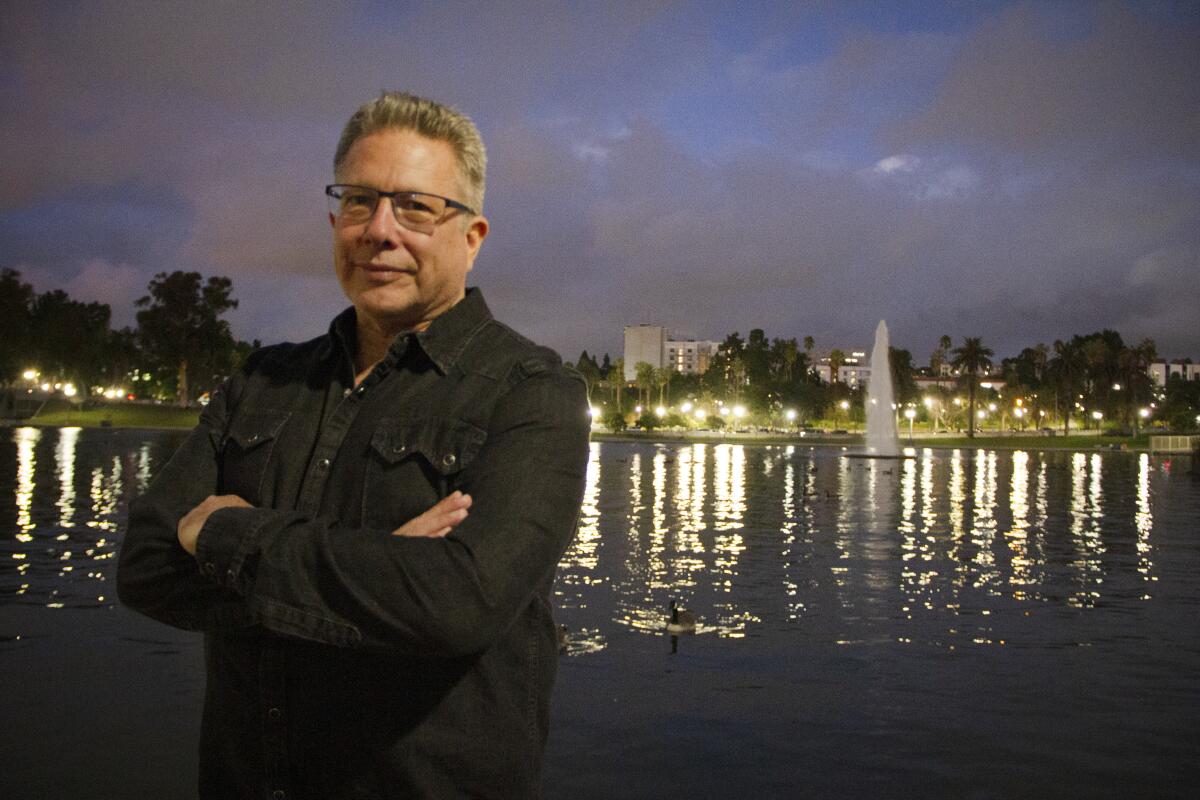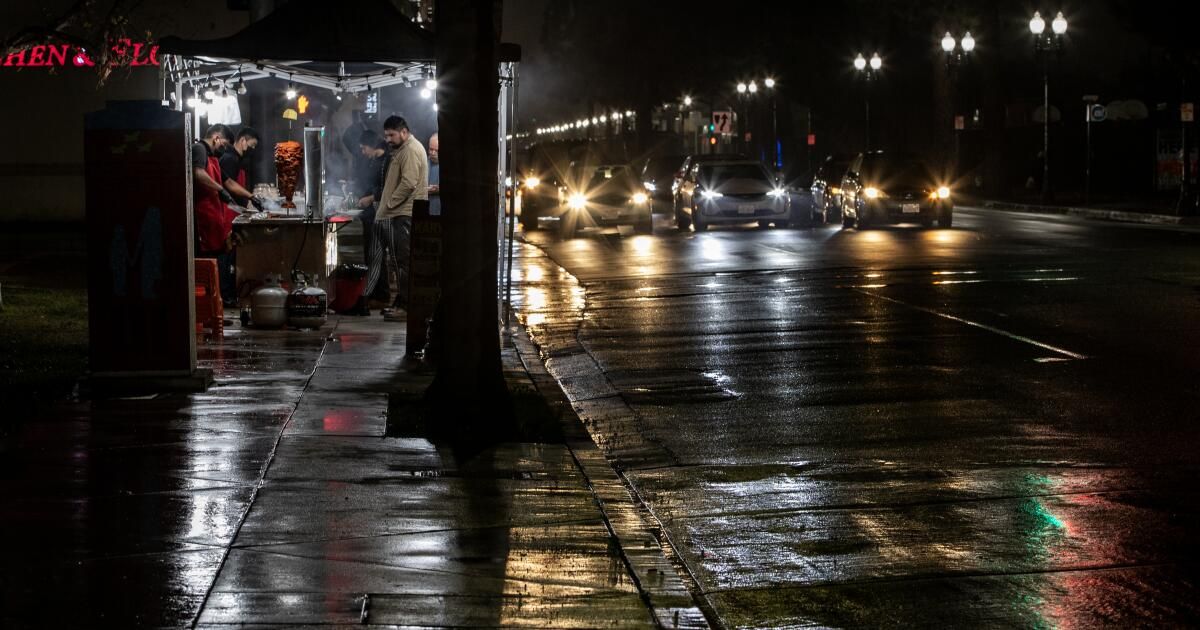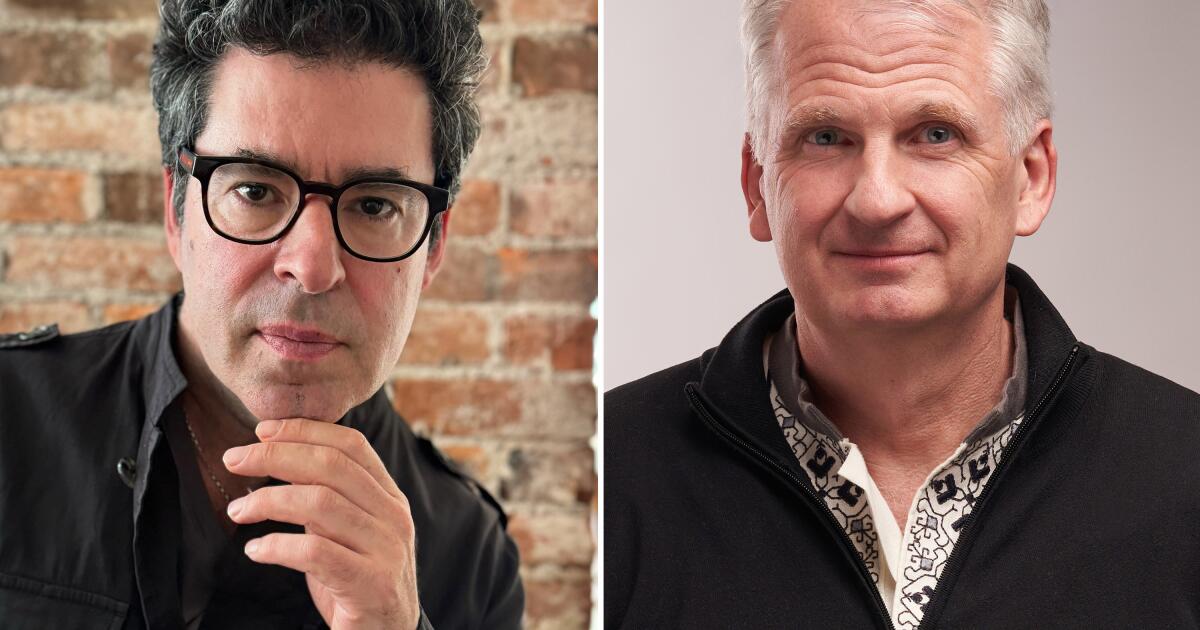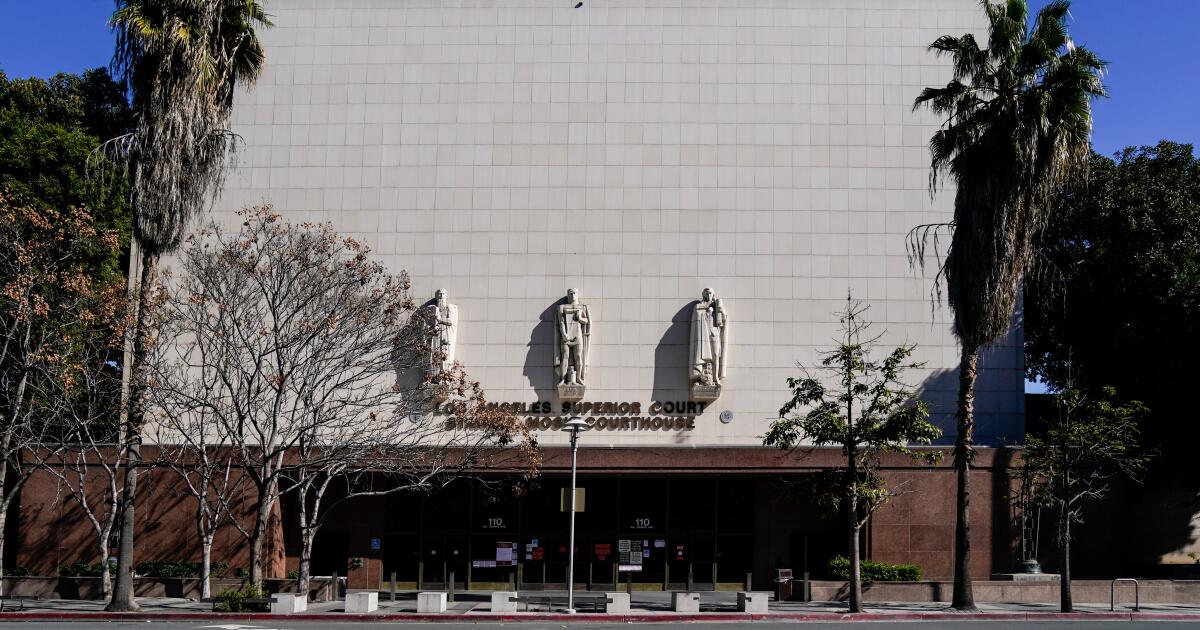Book Review
The Rent Collectors: Exploitation, Murder, and Redemption in Los Angeles's Immigrant Neighborhood
By Jesse Katz
Astra House: 320 pages, $28
If you purchase books linked on our site, The Times may earn a commission from Bookshop.org, whose fees support independent bookstores.
Crime shook Los Angeles in 2007: A gang member, Giovanni Macedo, approached street vendor Francisco Clemente and shot him five times. Clemente was seriously wounded, and one of the bullets intended for him hit 23-day-old Luis Angel, killing the baby. In “The Rent Collectors,” Jesse Katz analyzes the events of that day to ask whether a killer like Macedo can redeem himself.
Readers expecting a true-crime story that treats murder as a sui generis individual act will find a very different narrative here. Instead, Katz has constructed an ethnography of crime, placing it within the intricate web of history, geography, policing and politics to which crime is bound up.

Jesse Katz, author of “The Rent Collectors.”
(Eric Nazarian)
Katz, who spent 24 years covering stories for both the Los Angeles Times and Los Angeles magazine, brings his formidable skills to bear on charting the territory of Macedo’s crime. It happened near MacArthur Park, the large green space in Los Angeles’ Westlake district that by the 1980s had become a slum teeming with Central American refugees. What Los Angeles offered most of them, however, was not safety and stability but a life of fugitivedom for anyone in the United States without legal status. “Nowhere else in Los Angeles vibrated with his subversive energy or his work under the weight of so much trauma,” Katz writes.
Deprived of legal employment, they set up street stalls selling just about everything: loose cigarettes, diapers, street food, crafts and pirated forms of entertainment. “For the migrant, it was a ‘cold deal’: work on the sidelines, stay out of trouble, put up with the humiliation, give up the ability to vote or serve on a jury or collect unemployment insurance or feel safe in your own skin, and if you’re lucky, America can leave you in limbo.”
But Los Angeles, despite its image as a liberal city, punished street vendors. While other cities celebrated urban markets for their cultural richness and commercial opportunities, Katz explains, Los Angeles “has long viewed street vending as a nuisance. A code for foreignness and civic disorder.” It was part of the criminalization of poverty that continues today, as in Supreme Court ruling last month on punishing people for sleeping in publicThe city's bureaucracy and police force were put to the service of eliminating the poor from public space.
Columbia’s Lil Cycos filled that void. They were a street gang that made money from drug dealing and had diversified into a sophisticated protection racket that charged a fee to anyone who made money in this underground economy, whether they were sex workers or dealers. For the dealers, who already paid municipal fines for illegal sales, it was just another expense.
But these costs strained a population already under enormous pressure. Without access to health services or social resources that could help traumatized immigrants in their home countries, their parents’ coping mechanisms — alcoholism, domestic abuse, and the kinds of parental absence that occur when an adult must hold down multiple low-paying jobs to support the family — passed on further trauma to younger children.
Some of those factors were present in the life of the teenage Macedo. The immature brain of a teenager looking for an aspirational masculinity he could emulate made him return to the gang despite warnings from other gang members that it was not the life for him.
The salesman he shot, Clemente, was a symbol of a different struggle in the community. He already owned an auto repair business, but he needed more money, so he started working as a street vendor. He took two newcomers, Jessica Guzmán and Daniela García, under his wing to help him. Clemente, a former undocumented child from a Mexico City slum, refused when the gang demanded protection payments, so he sent Macedo to kill Clemente as an example. García had brought the newborn Ángel Luis to work with her because she had no other options.
Katz has constructed a fascinating and masterful urban narrative, the central axis of which is the enormous tragedy of the murder of a baby, a heinous crime for which Katz holds its perpetrator fully responsible. The State did too: Macedo is serving a long prison sentence.
But in truth, guilt over crime is like a shockwave that ripples through history and across society today. None of us is outside its zone. U.S. policies in Central America and the reactions to them created nightmares from which civilians fled in search of refuge and a better future. Here in the United States, instead, they found purgatory, their existence criminalized by a federal government that refused to take responsibility for the consequences of our foreign policy. Los Angeles, always concerned with its own reputation and aesthetics, criminalized them even further by punishing street vendors. Gangs took advantage of every vulnerability of this population and created new fears.
“The Rent Collectors” sets out to understand an evil act and asks whether atonement and redemption are possible for the person who committed it. It finds a web of meaning in which we are all suspended, implying that many other crimes could be understood in such a holistic way if we took the time. To the extent possible after such a senseless tragedy, Katz makes some sense of that September day.
Lorraine Berry is a writer and critic in Eugene, Oregon. @BerryFLW












